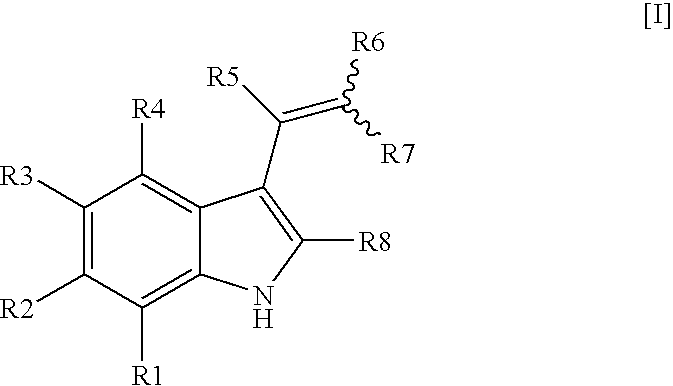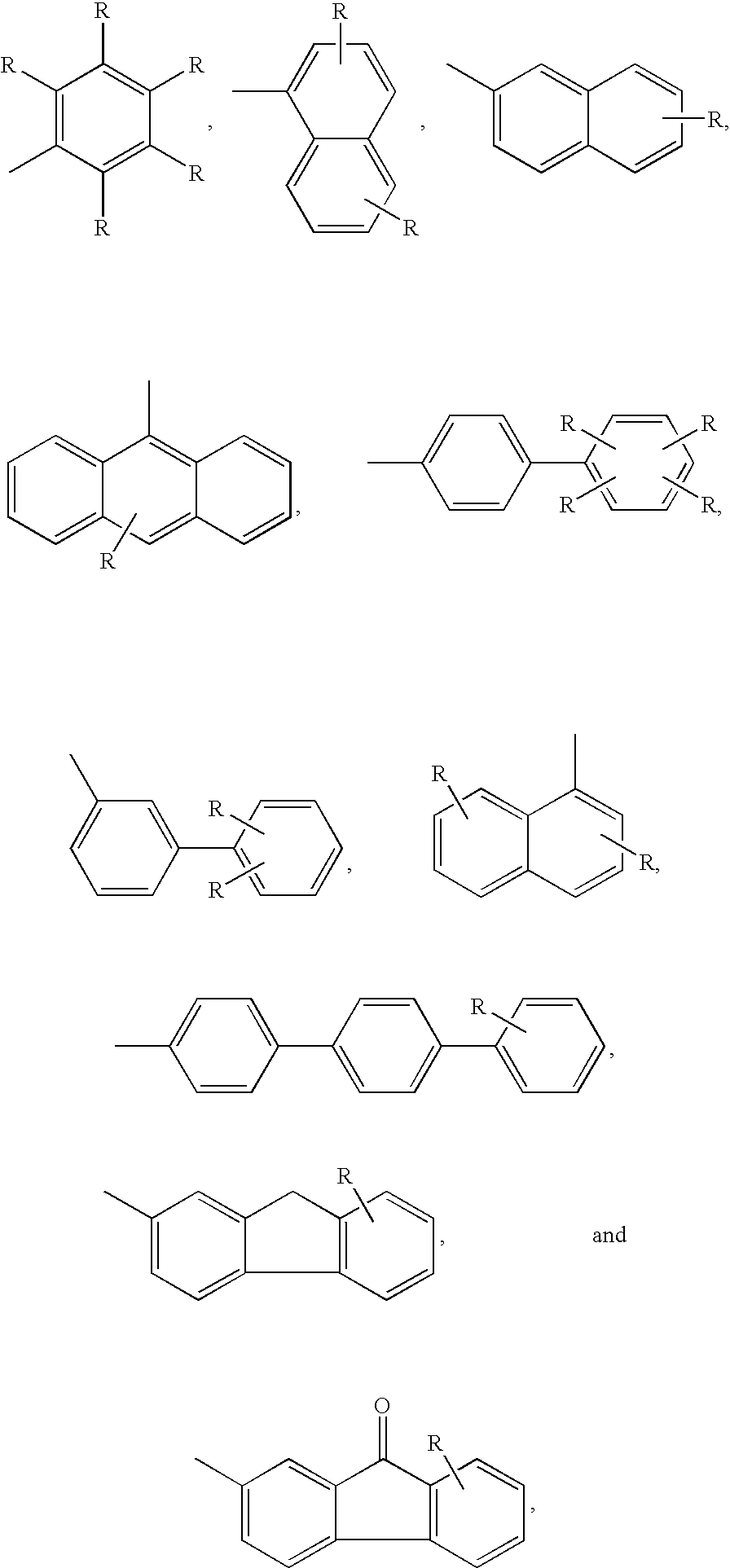Indole derivatives for use as chemical uncoupler
a technology of indole and derivatives, applied in the field of indolevinyl derivatives, can solve the problems of reduced motility, increased risk of premature death, decreased quality of life, etc., and achieve the effect of good 2nd harmonic generation efficiency
- Summary
- Abstract
- Description
- Claims
- Application Information
AI Technical Summary
Benefits of technology
Problems solved by technology
Method used
Image
Examples
examples
HPLC-MS (Method A)
[0189] The following instrumentation is used: [0190] Hewlett Packard series 1100 G1312A Bin Pump [0191] Hewlett Packard series 1100 Column compartment [0192] Hewlett Packard series 1100 G1315A DAD diode array detector [0193] Hewlett Packard series 1100 MSD [0194] Sedere 75 Evaporative Light Scattering detector
[0195] The instrument is controlled by HP Chemstation software.
[0196] The HPLC pump is connected to two eluent reservoirs containing: [0197] A: 0.01% TFA in water [0198] B: 0.01% TFA in acetonitrile
[0199] The analysis is performed at 40° C. by injecting an appropriate volume of the sample (preferably 1 μl) onto the column which is eluted with a gradient of acetonitrile.
[0200] The HPLC conditions, detector settings and mass spectrometer settings used are giving in the following table. [0201] Column: Waters Xterra MS C-18×3 mm id 5 □m [0202] Gradient: 5%-100% acetonitrile linear during 7.5 min at 1.5 ml / min [0203] Detection: 210 nm (analogue output from DA...
example a
2-(4-chlorophenyl)-3-formyl-indole
[0208]
[0209] To dry DMF (3.84 ml, 49.4 mmol) at 0° C. phosphoroxychloride was added dropwise. The resulting mixture was allowed to warm to room temperature. A solution of 2-(4-chloro-phenyl)-1H-indole (Maybridge, cat. no: RDR01154) (2.50 g, 11.0 mmol) in dry DMF was added. The reaction mixture was stirred at 35° C. for 1 h. Ice was added and the mixture was made alkaline with 2M aqueous sodium hydroxide, before it was refluxed for 30 min. After cooling, the mixture was extracted with ethyl acetate (3×80 ml). The combined organic layers were dried (Magnesium sulfate), filtered and concentrated under reduced pressure. The residue was crystallised in ethyl acetate to give the title compound as an off-white powder in 93% yield (2.62 g). 1H NMR (400 MHz, DMSO-d6): δ ppm 7.27 (m, 2 H), 7.52 (d, 1 H), 7.66 (d, 2 H), 7.80 (d, 2 H), 8.22 (d, 1 H), 9.97 (m, 1 H), 12.47 (m, 1 H).
example b
2-(4-nitrophenyl)-3-formyl-indole
[0210]
a) N-Butyloxycarbonylindole
[0211] Indole (5.0 g, 42.7 mmol) was dissolved in dry tetrahydrofurane (150 ml). 4-Dimethylaminopyridine (0.52 g, 4.3 mmol )and a 1M solution di-tert-butyldicarbonate in tetrahydrofurane (51.2 ml) was added. The resulting mixture was stirred at room temperature over night under nitrogen atmosphere. Concentration under reduced pressure gave an oil, which was purified by flash chromatography using ethyl acetate as eluent, to give an yellow oil (9.00 g, 97%). 1H NMR (400 MHz, DMSO-d6): δ ppm 1.64 (s, 9 H), 6.72 (d, J=3.03 Hz, 1 H), 7.24 (t, J=6.82 Hz, 1 H), 7.33 (t, J=7.07 Hz, 1 H), 7.63 (d, J=7.58 Hz, 1 H), 7.67 (d, J=3.54 Hz, 1 H), 8.08 (d, J=8.59 Hz, 1 H)
b) 2-(4-Nitro-phenyl)-indole-1-carboxylic acid tert-butyl ester
[0212] A solution of 2,2,6,6-tetramethylpiperidine (0.567 ml, 3.36 mmol) in dry tetrahydrofurane was cooled in a Schlenk tube to −20° C. N-Butyllithium in hexane (1.6 M, 2.0 ml) was added. The resultin...
PUM
| Property | Measurement | Unit |
|---|---|---|
| volume | aaaaa | aaaaa |
| temperature | aaaaa | aaaaa |
| structures | aaaaa | aaaaa |
Abstract
Description
Claims
Application Information
 Login to View More
Login to View More - R&D
- Intellectual Property
- Life Sciences
- Materials
- Tech Scout
- Unparalleled Data Quality
- Higher Quality Content
- 60% Fewer Hallucinations
Browse by: Latest US Patents, China's latest patents, Technical Efficacy Thesaurus, Application Domain, Technology Topic, Popular Technical Reports.
© 2025 PatSnap. All rights reserved.Legal|Privacy policy|Modern Slavery Act Transparency Statement|Sitemap|About US| Contact US: help@patsnap.com



